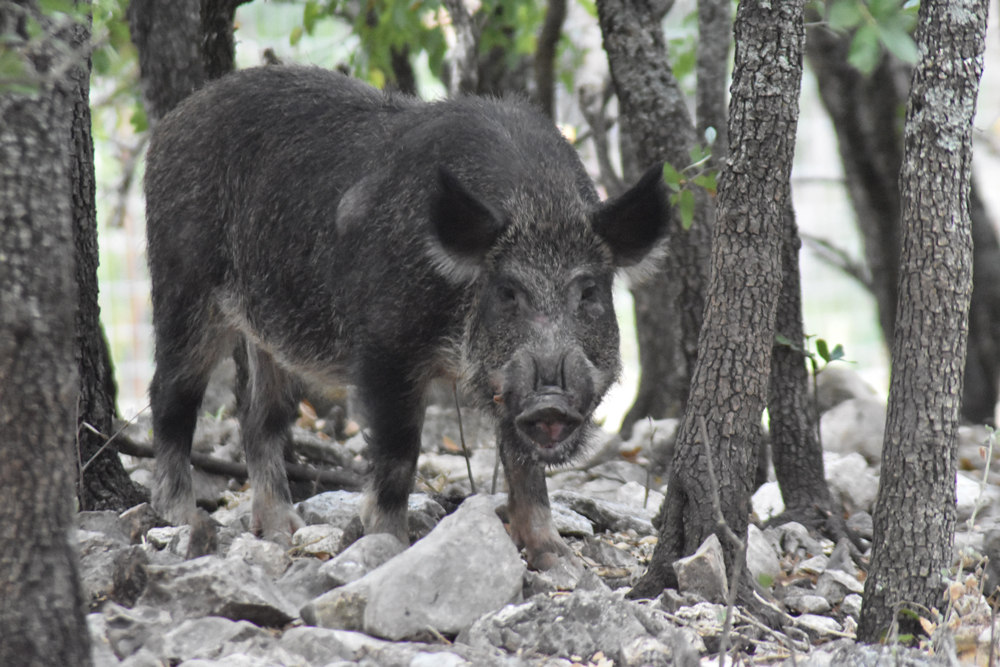Warfarin is a toxicant that has shown promise in reducing the feral hog population. A few years ago the Lege asked for a study on its effects before it could be approved for more general use. We now have the results of that study.
There are mixed results from a study on the effectiveness of using toxicants to reduce Texas’s feral hog population. The good news is a warfarin-based toxicant has proven to be an effective tool. The bad news is it is very time-consuming.
“We saw a high level of reduction in individual sounders that were feeding on toxic bait,” said Mike Bodenchuk, state director for the Texas Wildlife Service. Bodenchuk helped spearhead a two-year study on the effectiveness of using poison on feral hogs.
“The legislature directed us to study whether or not the toxicant would be effective in landowner use. So, our study was to use landowners to apply the toxicant,” said Bodenchuk. “We were directed to do it in multiple regions and in multiple seasons.”
Bodenchuk says if landowners followed the very precise protocols for use of the toxicant it was effective at reducing the pig population. The bad news is the process is time-consuming. It takes six weeks to set up the traps and properly bait the hogs.
“This isn’t a single-feeding type of bait. It requires multiple feedings,” said Bodenchuk.
Those multiple feedings involve luring the pigs into an area to eat while slowly adding the warfarin-based toxicant until they receive a lethal dose. The protocol can easily be disrupted, greatly reducing the effectiveness of the baiting process.
“If landowners tried to cut corners on that process, reduce the time, go too fast then their efficacy goes down. We actually had one bunch of pigs, someone shot at them while they were using the feeder and they quit using that feeder,” said Bodenchuk.
See here for the previous update in this saga, which was in 2017. I don’t know what the next steps might be, so I can’t say whether this moves the use of warfarin any closer. It sounds like it could be helpful, but isn’t a panacea. You can see more in this A&M AgriLife report on the study.


how does warfarin kill the pigs, and (if my guess about that is correct), isn’t that a terribly inhumane way to address the issue?
Why isn’t one of our research universities working on a safe and effective feed-vectored contraceptive to apply to this situation, along with the other situation of feral dogs and cats? It’s 2023 for crying-out-loud and we shouldn’t have to be poisoning our way out of the first problem, and just living with the second one.
Yes, warfarin is an anticoagulant and it is inhumane, not to mention that other animals may be able to get into the bait. Hunting would be much more humane as well as providing meat to the hungering hordes.
If those little piggies had just kept their little (back leg) knees together, practiced abstinence, and prayed to their Pig Lord for guidance and direction, we wouldn’t have this feral hog problem.
Two ways we’re going to reduce the population, folks – bullets or poison.